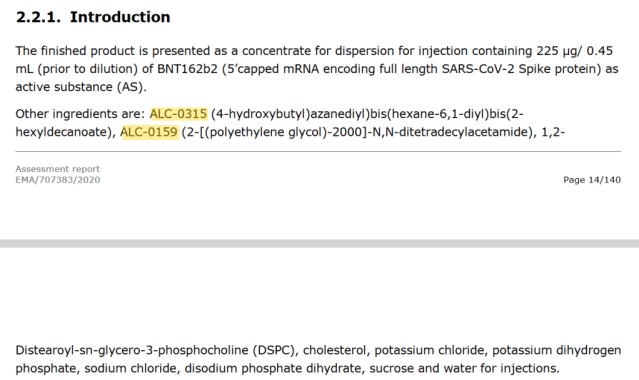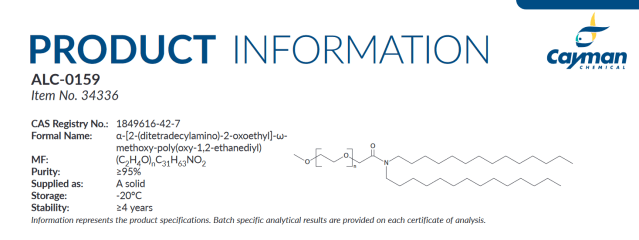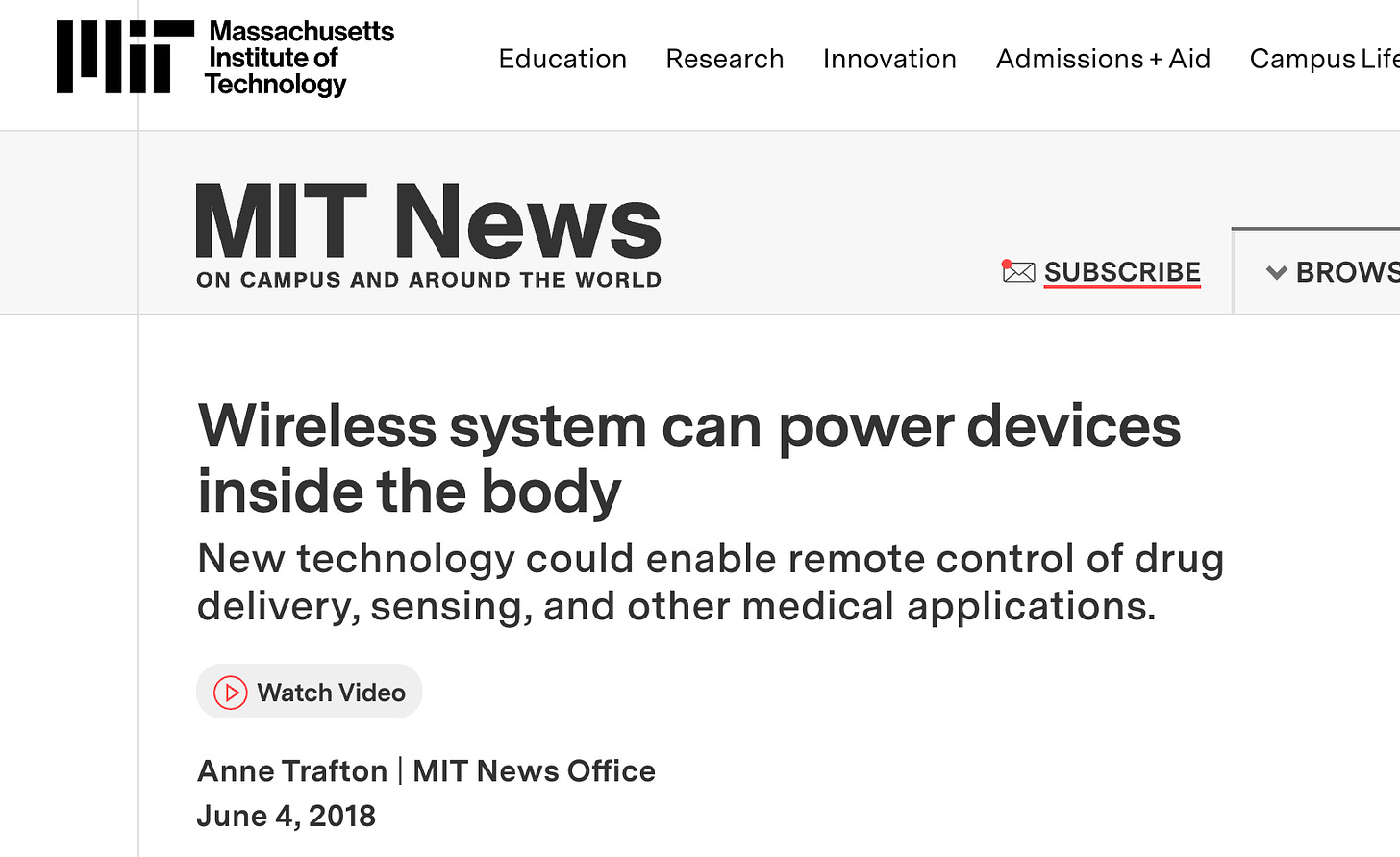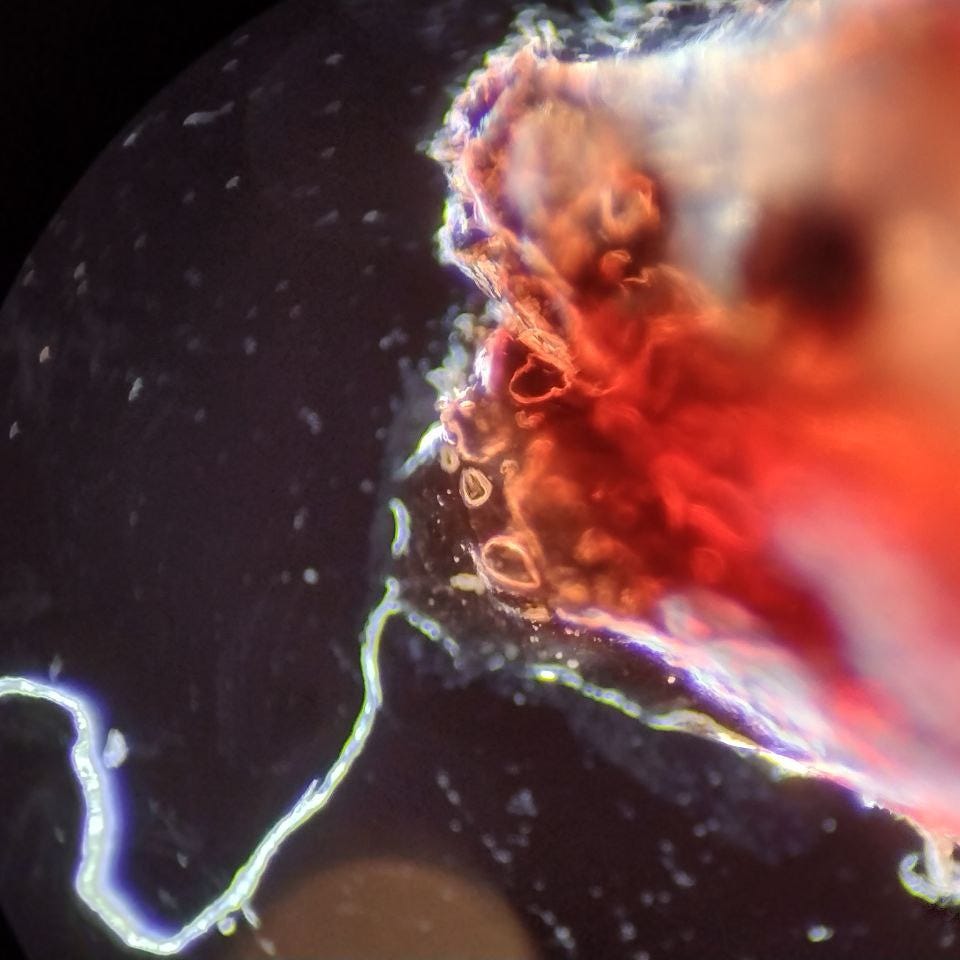*Updated with contributions from the fam (thank you JimB)*
The rabbit holes these days are abundant and seemingly endless in depth.
This was not the post I was planning on, but here we are.
I missed this back in April. That’s not saying much, however I do tend to pay attention to the hot conspiracy topics, so I’m surprised it slipped by.
I’m just picking my jaw up off the floor that all the MSM parrots didn’t report this.
Just kidding. My jaw is so far from the floor.
BREAKING: FDA confirms Graphene Oxide is in the mRNA COVID-19 Vaccines after being forced to publish Confidential Pfizer Documents by order of the US Federal Court
April 3, 2023
Recent evidence has emerged that confirms the presence of Graphene Oxide, a highly toxic and conductive substance, in the Pfizer vaccine. And it has come from the US Food and Drug Administration (FDA) which has been forced to publish the confidential Pfizer documents by order of the Federal Court in the USA.
But what is most interesting about the study is that it confirms on page 7 that reduced Graphene Oxide is required to manufacture the Pfizer Covid-19 vaccine because it is needed as a base for the lipid nanoparticles.
Pfizer states on page 7 of the study in section 3.4 the following –
They’ve been able to say this because those who’ve proven and speculated Graphene Oxide is in the Pfizer Covid19 injection have been asking the wrong question.
What everyone should have been asking is, ‘is Graphene Oxide used in the manufacturing process of the Pfizer Covid vaccine?’
Because as this document, which the FDA attempted to keep confidential and sealed the 75 years, shows, Graphene Oxide is indeed used in the manufacturing process of the vaccine because it is vital in helping to make the vaccine’s lipid nanoparticles stable.
Therefore, trace amounts or large amounts, depending on the batch, of reduced Graphene Oxide inevitably make their way into the Pfizer Covid-19 injections.
Furthermore, it has been discovered that two of the lipids in Pfizer Covid-19 vaccines are ALC-0159 and ALC-315, as confirmed by the assessment report of the Pfizer Covid-19 vaccine published by the European Medicines Agency.
But both of these lipids carry manufacturer’s warnings that state they are never to be used in humans or animals.
As you can see for yourself, it tiny writing at the bottom of the product inserts here and here.
Graphene Can Put the G in 5G
May 21, 2019
Telecommunications is a rapidly advancing technology. Keeping it up to speed, literally and figuratively, requires enormous resources and time. What if there were a way to expedite the process? Soon, this may be a reality, thanks to graphene.
The wonder material was officially discovered in 2004 by two researchers at the University of Manchester, which won them a Nobel prize. The material is formed of a single layer of carbon atoms in a hexagon shape. It is stronger than steel and thinner than a human hair, giving it superpower qualities that could replace many materials we currently use in daily life. It has already begun to impact farming, photodetection, water purification, solar panels, medical diagnostics, and more. For telecommunications, graphene may be able to replace the fiber-optic cable, speeding up communications and making them more reliable in the long term. How can this be done? By combining graphene with 5G.
5G performance has the capability for extremely high amounts of data, speed, and connectivity across devices. All the while, it reduces energy use, costs, and delays. Since the introduction of the mobile phone, there have been many iterations of performance systems. 2G, 3G, and 4G were once revolutionary for wireless communication. Now, 5G is changing the game altogether. 5G can be put to use in everything from virtual and augmented reality for live broadcasting, automotive advancements, manufacturing, healthcare, artificial intelligence, and smart cities, to name a few.
Communications of the future may be faster and easier than ever, as long as 5G works seamlessly, and graphene in its monolayer form can give 5G what it needs. Research is underway to see how graphene’s high conductivity and flexible monolayer can support the development of 5G wireless technology.
In 2017, a team at Sweden’s Chalmers University made a breakthrough in this research. When they combined terahertz detection with flexible graphene, a 5G mobile device controlled the Internet of Things (IoT). With progress like this, the future of electronic and optoelectronic technologies is bright thanks to the combination of graphene and 5G.
It is no wonder that mobile companies are perking up at the prospect of combining graphene with 5G. It can speed up their transmission of data much more efficiently than silicon. At some point, if things keep going in the direction they are, graphene will be cheaper than silicon too.
While the promise of graphene and 5G is heartening, there is a long way to go before it is mainstream in the manufacturing world. Graphene’s newness in the technology world makes more testing a necessity. Industry leaders are skeptical as to when it will make its official debut, but the need for 5G makes graphene’s potential more exciting than ever. With the right resources and work, it’s only a matter of time before we can benefit from graphene’s incorporation into 5G.
I wonder if the newness in the biological world warranted a necessity for testing?
Silly Sarah, I’m sure it was abundantly tested.
MIT researchers, working with scientists from Brigham and Women’s Hospital, have developed a new way to power and communicate with devices implanted deep within the human body. Such devices could be used to deliver drugs, monitor conditions inside the body, or treat disease by stimulating the brain with electricity or light.
The implants are powered by radio frequency waves, which can safely pass through human tissues. In tests in animals, the researchers showed that the waves can power devices located 10 centimeters deep in tissue, from a distance of 1 meter.
“Even though these tiny implantable devices have no batteries, we can now communicate with them from a distance outside the body. This opens up entirely new types of medical applications,” says Fadel Adib, an assistant professor in MIT’s Media Lab and a senior author of the paper, which will be presented at the Association for Computing Machinery Special Interest Group on Data Communication (SIGCOMM) conference in August.
Until now, this has been difficult to achieve because radio waves tend to dissipate as they pass through the body, so they end up being too weak to supply enough power. To overcome that, the researchers devised a system that they call “In Vivo Networking” (IVN). This system relies on an array of antennas that emit radio waves of slightly different frequencies. As the radio waves travel, they overlap and combine in different ways. At certain points, where the high points of the waves overlap, they can provide enough energy to power an implanted sensor.
The research was funded by the Media Lab Consortium and the National Institutes of Health. (source)
Recent progress of graphene oxide as a potential vaccine carrier and adjuvant
June 10, 2020
Our work describes the surface modification of graphene oxide and for the first time summarizes that functionalized graphene oxide serves as a vaccine carrier and shows significant adjuvant activity in activating cellular and humoral immunity. In the future, it is expected to be introduced into vaccine research to improve the efficacy of vaccines.
In the future…right.
Functionalized graphene oxide serves as a novel vaccine nano-adjuvant for robust stimulation of cellular immunity
Benefiting from their unique physicochemical properties, graphene derivatives have attracted great attention in biomedicine. In this study, we carefully engineered graphene oxide (GO) as a vaccine adjuvant for immunotherapy using urease B (Ure B) as the model antigen. Ure B is a specific antigen for Helicobacter pylori, which is a class I carcinogen for gastric cancer. Polyethylene glycol (PEG) and various types of polyethylenimine (PEI) were used as coating polymers. Compared with single-polymer modified GOs (GO-PEG and GO-PEI), certain dual-polymer modified GOs (GO-PEG-PEI) can act as a positive modulator to promote the maturation of dendritic cells (DCs) and enhance their cytokine secretion through the activation of multiple toll-like receptor (TLR) pathways while showing low toxicity. Moreover, this GO-PEG-PEI can serve as an antigen carrier to effectively shuttle antigens into DCs. These two advantages enable GO-PEG-PEI to serve as a novel vaccine adjuvant. In the subsequent in vivo experiments, compared with free Ure B and clinically used aluminum-adjuvant-based vaccine (Alum-Ure B), GO-PEG-PEI-Ure B induces stronger cellular immunity via intradermal administration, suggesting promising applications in cancer immunotherapy. Our work not only presents a novel, highly effective GO-based vaccine nano-adjuvant, but also highlights the critical roles of surface chemistry for the rational design of nano-adjuvants.
One of the most important effects of GO reduction process is the increase of electric conductivity.
Liquid Computing
Harvard Magazine; Nov-Dec 2001
Imagine a computer, suspended in a flask of liquid, which assembles itself when the liquid is poured onto a desktop. Sound like science fiction? Hyman professor of chemistry Charles Lieber is making it happen in his laboratory, where researchers have already created tiny logic circuits and memory--the two main components of a computer--in just this manner. And these circuits are tiny, just a few atoms across.
Charles Lieber's nanoscale transistors can enter cells without harming them
Harvard Magazine; Jan-Feb 2011
Imagine being able to signal an immune cell to generate antibodies that would fight bacteria or even cancer. That fictional possibility is now a step closer to reality with the development of a bio-compatible transistor the size of a virus. Hyman professor of chemistry Charles Lieber and his colleagues used nanowires to create a transistor so small that it can be used to enter and probe cells without disrupting the intracellular machinery. These nanoscale semiconductor switches could even be used to enable two-way communication with individual cells.
“Digital electronics are so powerful that they dominate our daily lives,” Lieber points out. “When scaled down, the difference between digital and living systems blurs, so that you have an opportunity to do things that sound like science fiction--things that people have only dreamed about.”
Vitamin C Reduced Graphene Oxide Enhances Multimodal Microelectrodes
The reduction of VC [vitamin C] is optimized to attain compatibility with polymeric substrates in terms of their comfort and softness for their applications in implantable medical devices. Additionally, the processing of rGO and the designed film deposition method allowed their facile integration into the microfabrication process to produce neural microelectrodes.
Additionally, the excellent charge transfer and charge storage properties of rGO-coated electrodes demonstrated their ability to serve as promising candidates for in vivo stimulation studies and chronic recording.
In future work, the researchers anticipate completing concurrent in vivo recording and stimulation experiments by employing rGO/Au arrays for recording electrophysiology and stimulation of neural tissue with a direct passage of electric charge.
Preparation of Graphene Oxide-Embedded Hydrogel as a Novel Sensor Platform for Antioxidant Activity Evaluation of Scutellaria baicalensis
In this work, we proposed an electrochemical platform based on a hydrogel synthesized using graphene, chitosan, and zinc ions. This electrochemical platform can be used for evaluating the antioxidant capacity by monitoring the current change with the reduction of zinc ions. The addition of GO significantly enhances the current response, which could be used for high-sensitivity sensing.
GO Enhances the Phytotoxicity of Arsenic in Wheat
In conclusion, “indirect” nanotoxicity is defined as toxic amplification of other toxicants or pollutants by nanomaterials. This work comprehensively analyzed “indirect” nanotoxicity of the relatively biocompatible GO, which amplified the phytotoxicity of widespread As in wheat. The indirect nanotoxicity of GO involved at least five components, as described in Figure S7: (i) enhancement of growth inhibition and oxidative stress; (ii) regulation of key forms of metabolism, such as carbohydrate, amino acid and secondary metabolism; (iii) increasing damage to cell structures and permeability; (iv) regulation of As uptake and transformation via chemical interactions, such as through As loading onto GO entering the cell; and (v) regulation of As uptake and transformation via biological interactions, such as transporter gene expression and enzyme catalysis. Given the widespread exposure to As in agriculture, “indirect” nanotoxicity of GO should be considered in relation to food safety.
And maybe injectable safety. You know, because most people that take vaccines also eat.
On June 17, “in a historic victory for farmworkers and the environment, the U.S. Court of Appeals for the Ninth Circuit sided with Center for Food Safety … by overturning the Environmental Protection Agency’s (EPA) decision that the toxic pesticide glyphosate is safe for humans and imperiled wildlife.”
Synthesis and characterization of graphene oxide functionalized with MnFe2O4 and supported on activated carbon for glyphosate adsorption in fixed bed column
Low-dose exposure to graphene oxide significantly increases the metal toxicity to macrophages by altering their cellular priming state
Specifically, GO caused impairments to the cellular morphology and membrane integrity of macrophages, and remarkably enhanced the cellular uptake of Cd and other non-essential metal ions (such as Hg and Gd). Furthermore, upon low-dose GO pre-treatment, the uptake of Cd at a non-toxic concentration brought about a remarkable amount of oxidative stress in macrophages, and ultimately resulted in increased cell death. Mechanistic investigations illustrated that GO pre-treatment triggered cell death through apoptosis because of Cd exposure. Overall, this study’s results reveal a new path for understanding the impact of GOs on EHS through the perspective of its synergistic and secondary effects, previously unidentified mechanisms via which nanomaterials might pose detrimental effects on organisms.
Effects of Graphene Oxide Nanoparticles on the Immune System Biomarkers Produced by RAW 264.7 and Human Whole Blood Cell Cultures
Abstract
Graphene oxide nanoparticles (GONPs) have attracted a lot of attention due to their many applications. These applications include batteries, super capacitors, drug delivery and biosensing. However, few studies have investigated the effects of these nanoparticles on the immune system. In this study, the in vitro effects of GONPs on the immune system was evaluated by exposing murine macrophages, RAW 264.7 cells and human whole blood cell cultures (to GONPs. The effects of GONPs on RAW cells were monitored under basal conditions. The whole blood cell cultures were exposed to GONPs in the presence or absence of the mitogens lipopolysaccharide (LPS) and phytohaemmagglutinin (PHA). A number of parameters were monitored for both RAW and whole blood cell cultures, these included cytotoxicity, inflammatory biomarkers, cytokines of the acquired immune system and a proteome profile analysis. The GONPs were cytotoxic to both RAW and whole blood cell cultures at 500 μg/mL. In the absence of LPS, GONPs elicited an inflammatory response from the murine macrophage, RAW and whole blood cell cultures at 15.6 and 5 μg/mL respectively. This activation was further corroborated by proteome profile analysis of both experimental cultures. GONPs inhibited LPS induced interleukin 6 (IL-6) synthesis and PHA induced interferon gamma (IFNγ) synthesis by whole blood cell cultures in a dose dependent manner. In the absence of mitogens, GONPs stimulated IL-10 synthesis by whole blood cell cultures. The current study shows that GONPs modulate immune system biomarkers and that these may pose a health risk to individuals exposed to this type of nanoparticle.
AhR Activation Leads to Alterations in the Gut Microbiome with Consequent Effect on Induction of Myeloid Derived Suppressor Cells in a CXCR2-Dependent Manner
Taken together, this study shows that a nanomaterial can influence the crosstalk between the microbiome and immune system in an AhR-dependent manner.
AhR controls intestinal epithelial cell regeneration, mediates anti-inflammatory responses and modulates type 3 innate lymphoid cell (ILC3) polarization2. The activation of AhR also facilitates the induction of tolerogenic regulatory T cells (Tregs), and a recent study has shown that the AhR pathway regulates the ILC2–ILC3 balance in the gastrointestinal (GI) tract to ensure an appropriate immune response against pathogens9. Thus, alterations of the gut microbiota could lead to changes in the pool of AhR ligands, subsequently affecting gut immunity in the host.
What is AhR and why it matters?
The aryl hydrocarbon receptor (AhR) is a ligand-activated transcription factor that has been shown to be an essential regulator of a broad spectrum of biological activities required for maintaining the body’s vital functions. AhR also plays a critical role in tumorigenesis. Its role in cancer is complex, encompassing both pro- and anti-tumorigenic activities.
The aryl hydrocarbon receptor (AhR) is a ligand-activated transcription factor that has been shown to be an essential regulator of a broad spectrum of biological activities required for maintaining the body’s vital functions. AhR also plays a critical role in tumorigenesis. Its role in cancer is complex, encompassing both pro- and anti-tumorigenic activities. Its level of expression and activity are specific to each tumor and patient, increasing the difficulty of understanding the activating or inhibiting roles of AhR ligands. (source)
Perturbation effect of reduced graphene oxide quantum dots (rGOQDs) on aryl hydrocarbon receptor (AhR) pathway in zebrafish
The results demonstrated that rGOQDs significantly increased the green fluorescent protein (GFP) expression promoted by cyp1a in a dose-dependent manner, which was also further confirmed by the western blotting. This study offered an opportunity to reveal the potential hazards of in vivo bio-probes, which provided a valuable reference for investigating the graphene-based materials on the disturbance of AhR pathway in biological organisms.
Graphene Oxide may be toxic, kills bacteria
The researchers showed that the graphene-based materials kill substantially more bacteria than graphite-based materials. Graphene Oxide was the most dangerous material. The researchers say that most of the E.coli cells were individually wrapped by layers of graphene oxide. In contrast, E. coli cells were usually embedded in the larger reduced-graphene-oxide aggregates (see image above).
Cell-wrapping kill more cells than cell-trapping, and the researchers believe that this is because the direct contact of cell surface with graphene causes membrane stress and irreversible damage.
Graphene Nanomaterials-Based Radio-Frequency/Microwave Biosensors for Biomaterials Detection
2019 Mar
Recent advances in graphene nanomaterials such as synthesis techniques, electrical, thermal and mechanical analysis, surface treatment and device design have accelerated the development and application of graphene nanomaterials-based nanoelectronics as well as bioelectronics. In this review, we have examined the emerging advances of graphene nanomaterials-integrated biosensors including structures and merits of graphene nanomaterials and their biological functionalization in RF/microwave biomedical applications. From the developed RF/microwave biosensors, these biosensing schemes could be classified with passive RF/microwave devices and RF/microwave systems with graphene nanomaterials. Firstly, it was used as a biosensing scheme utilizing simple RF/microwave devices such as resonators and capacitors, with graphene nanomaterials like GO or rGO. In the case of latter, it was used as a biosensing scheme utilizing RF/microwave systems with graphene nanomaterials, e.g., graphene. These RF/microwave biosensors could be detectable of biomolecules, e.g., glucose, DNA, as well as bacteria, e.g., S. aureus, E. coli and so on, via bifunctional peptide.
However, the research and development of these materials-based biosensing systems are in their infancy in the RF/microwave biomedical applications. This is because it is not only difficult to find the optimized frequency for biosensing, but devices and circuits also are dependent on the frequency. However, since there are great merits such as real-time, non-invasive, non-contact function, as a graphene nanomaterials-based RF/microwave biosensor, the biosensing scheme still needs to develop the robust biosensing platform integrated with wireless and flexible devices and circuits. In this case, there are also remains challenges how to find effective integration methods and how to secure stability for good performance of RF/microwave devices and systems with graphene nanomaterials.
I’m stopping here. If I keep digging the hole just gets deeper.
Graphene Oxide is in the jabs. Its function is far more that dual-use.
It’s an excellent conductor. Especially the reduced form.
Like a fine wine, it pairs well with 5G.
Its adjuvant promises are abundant.
Meanwhile, it’ll wreck your gut in multiple ways. It’s an efficient bacteria killer, which sounds great…but there are a lot of bacteria that are good. Especially in our gut. Probably nbd though, right?
It can promote suppress cancer. Looks like suppressing is what’s happening for sure. The term “Wildfire Cancer” is a clear indication of this. Duh.
It’s relatively new, so we don’t actually know what the fuck is going to happen. But who cares. Get your 8th booster. Mix and match. Pfizderna. Modernza. Pfizeneca. Drive it like you stole it. Fuck it.
*Update/Addendum:
I have focused on graphene oxide as an ingredient in injectable products, however there’s no shortage of ways that graphene is being delivered to you. If you would like to dive into this, here are some links:














IMFHO it's a new and improved cult of the old cult called Allopathic Medicine. The many worldwide worshippers are not only born in their synagogues but visit 10 times more frequently than a mere fifty years ago. Addicts they are for they crave the pain, suffering and even loss of empty souls around them as they blindly return to the altar for their blessings. But they always carry that empty promise where the next visit will free their mind, body and soul ...........
Dear Sarah-- you said...
This was not the post I was planning on, but here we are...
Wow does that resonate. I start in the morning with what I think is going to be such a crucial column. Research it makes some notes, something else happens, and the next thing you know I’m three topics over and doing a deep dive someplace else. Here we are indeed.